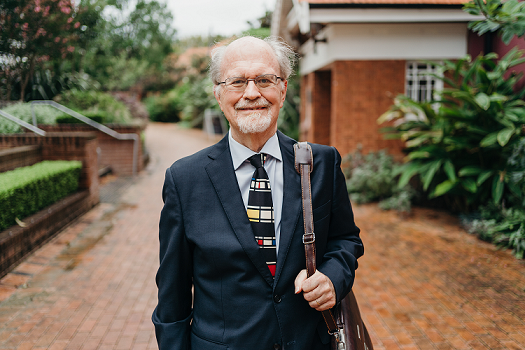
Australian principals are facing record levels of physical violence, threats of violence, and bullying, new research shows.
The Australian Catholic University’s Australian Principal Occupational Health, Safety and Wellbeing Survey 2023, released today, shows nearly half (48%) of Australia’s school principals reported being physically attacked in 2023 – a staggering 78% increase from 2011 when the survey first started.
According to the school leaders surveyed, an alarming 96% of physical assaults are coming from the students under their care, while threats of violence from parents or caregivers remained high (65%), as did cyberbullying, with a staggering 88% of principals saying they’d dealt with this form of abuse in 2023.
While violent assaults, threats, and bullying against the profession is on the rise, the top sources of stress for school leaders was the sheer quantity of work, lack of time to focus on teaching and learning, mental health of students, mental health of staff, and student-related issues.
The good news
Despite the immense pressures facing school leaders, there were some areas indicating relief, albeit minor.
While school leaders’ average working hours remained significant at 55.95 hours per week during term time and 21.83 hours per week during the holiday periods in 2023, this was slightly lower than what was reported in 2022.
The number of school leaders triggering “red flag” emails were also lower (42%) compared to 47% from 2022 data, though the report’s authors note that this remains significantly higher than in 2021.
It would also seem that Australia’s school leaders are growing more resilient amidst the pressures they’re facing.
For the first time, the survey reported the Brief Resilience Scale (BRS) – a measure adopted in 2017 to assess a participant's ability to bounce back from adverse events.
The BRS works on a five-point scale across six items, asking how much the participant agrees to statements such as "I tend to bounce back quickly after hard times." The average of the six items generates that participant's score for the scale, with a higher score indicating greater resilience.
The survey revealed a consistent upward trend in mean BRS score for all school leaders since it was first used in 2017.
Australia in the midst of leadership pipeline crisis
The report found one five school leaders reported moderate to severe depression, with early career leaders suffering greater levels of anxiety than their more experienced peers. Others admitted being at risk of serious mental health concerns, including burnout, stress, and trouble sleeping.
“We need to urgently address these challenging times in our schools,” survey co-lead investigator Professor Herb Marsh told The Educator.
“If we don’t, we could see a serious loss of school leadership. This exodus of experienced leaders, particularly concerning with over half considering early retirement, could create a significant leadership gap in Australian schools.”

More than half of the school leaders surveyed (56%) often seriously considered leaving their current job, with the highest intention to quit reported by NSW school leaders, followed by school leaders in the Northern Territory (54.55%) and Tasmania (53.45%).
This is being fuelled by an increase in workplace demands, which was noted across all metrics of the survey's Demands at Work Domain, as well as a negative change in all metrics of the Health and Wellbeing Domain compared to the general population.
“With high numbers of principals considering leaving, Australia faces a potential school leadership shortage. This could lead to instability in schools and a loss of valuable knowledge and mentorship for new leaders,” Professor Marsh said.
“Fewer leaders would mean a heavier workload for those remaining, further increasing stress and burnout risk, particularly for early career leaders. School leadership shortages may also exacerbate existing challenges related to the recruitment and retention of school leaders.”
‘Long-term impacts’ on student learning
The report’s co-lead investigator, Associate Professor Theresa Dicke said the survey identified issues that may have long-term impacts on student learning.
“A stressed and burned-out school leadership can negatively impact the overall school climate and ultimately student education and wellbeing,” Associate Professor Dicke told The Educator.
“We urge education ministers to take immediate action.”

The report’s authors propose a national summit to address the issues highlighted by the survey and prioritise principal wellbeing.
“Convening a national summit with education ministers, researchers, and representative principals would be a good starting point.”
‘We must reduce the burden on principals right now’
Professor Marsh said there is a critical need for measures to create a safer work environment in Australia’s schools.
“Australian school leaders are telling us that there are systemic problems of violence in their schools. We need to address the physical violence and threats of violence in our schools. Schools need to be safe places for everyone,” he said.
“We need coordinated strategies and resource allocation to tackle the problems identified by our research.”
Professor Marsh noted that in the 13-year history of the survey, a recurrent message from principals is that workloads are unsustainable.
“Reducing this burden is essential and the time is now. Employers need to consult with principals on solutions like increased administrative support, task delegation, and streamlined reporting to demonstrate a commitment to action.”
A potential solution
Andy Mison, president of the Australian Secondary Principals' Association (ASPA) said the next Education Minister’s Meeting (EMM) must “respond meaningfully” to the ACU’s report.
To tackle the multitude of issues principals are facing, ASPA is proposing a sixth priority area – titled: ‘Retain and Sustain our Principals’ – to be added to the National Teacher Workforce Action Plan.
ASPA says the Proposed Priority area 6 should:
• Fund ongoing research and monitoring of principal's health and wellbeing.
• Incorporate principal's health, safety & wellbeing into the next National School Reform Agreement.
• Review principal workload to identify the optimal distribution of administrative responsibilities among schools, education systems and other agencies.
• Invest in the training and development of skilled school administrative staff, and the business systems that support efficient school operations.
• Strengthen authority for principals to respond to unsafe and violent behaviour.
• Develop training and development programs specifically tailored to school principals.
• Develop frameworks for principal remuneration benchmarked against equivalent roles in industry and the public sector that recognises the significant value, complexity and responsibility of the role.
“We urgently need a coherent and effective approach to retaining and sustaining our vital school leadership workforce.” Mison said.
“School leaders have been ignored for too long - it's time for a genuine commitment and investment that makes their wellbeing a top priority. If you want happy, healthy and successful schools, you need happy, healthy and successful school leaders.”


